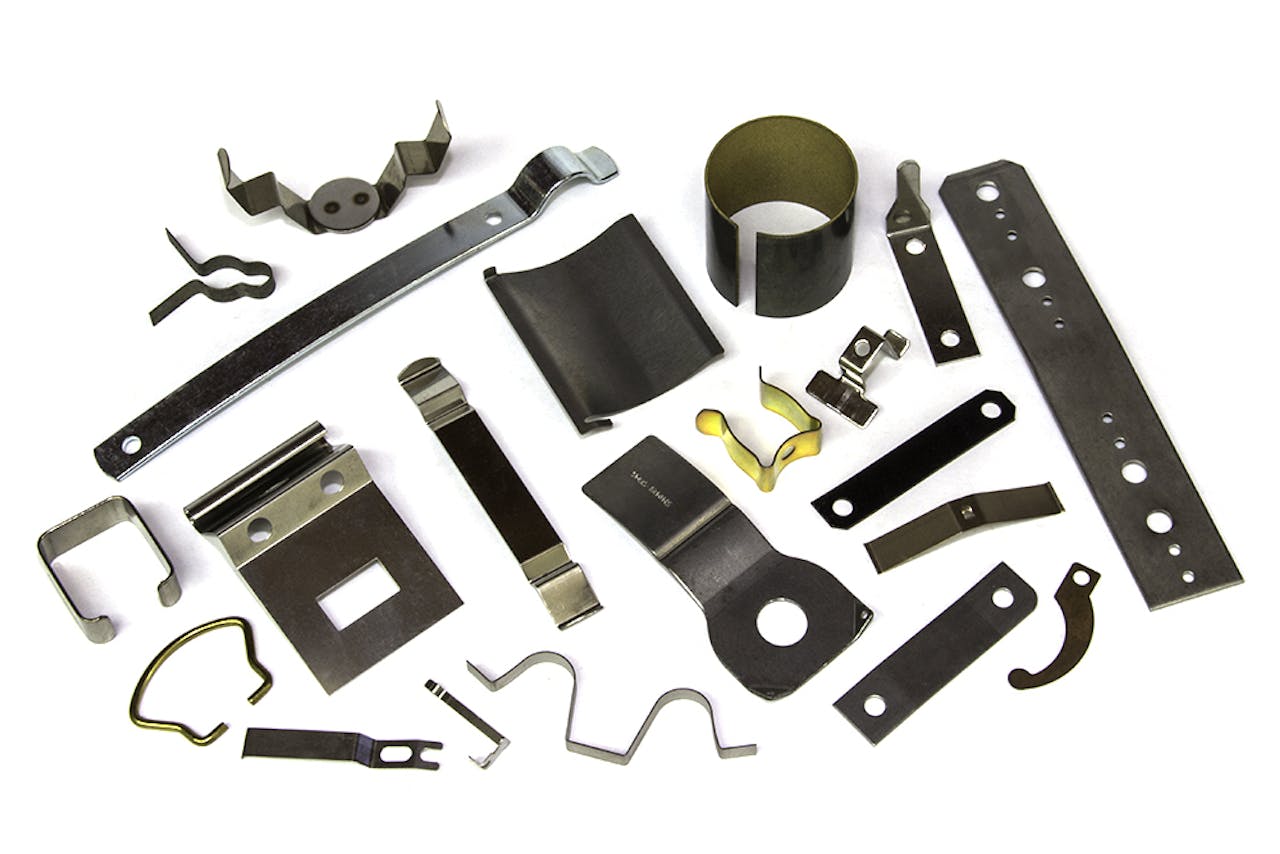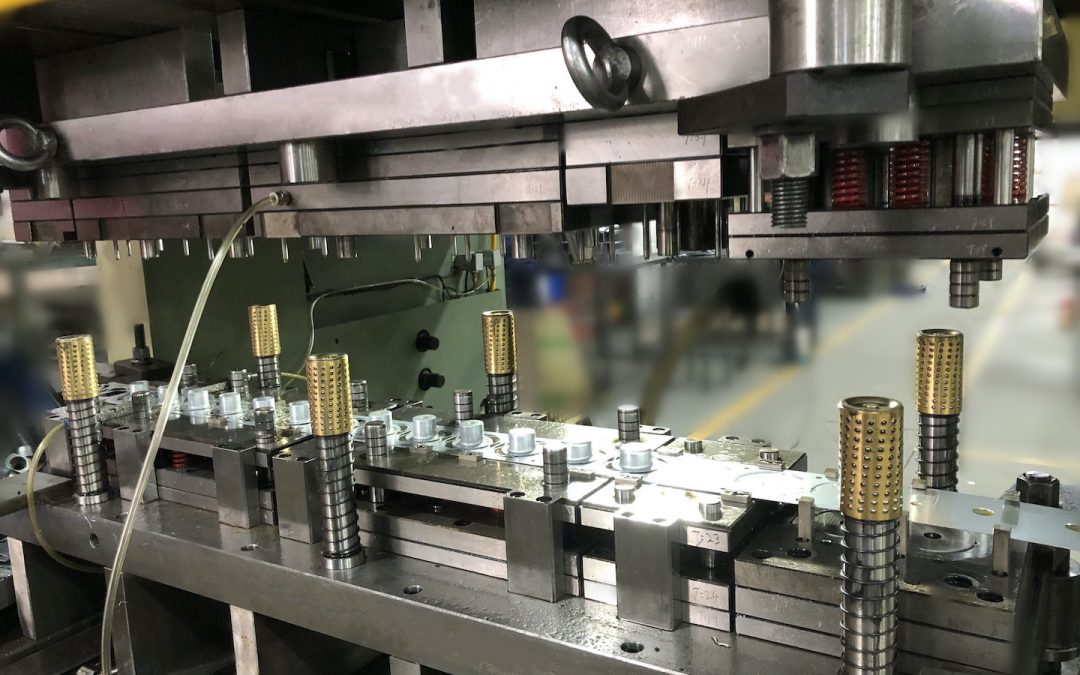The Duty of Metal Stamping in Modern Production and Product Advancement
The Duty of Metal Stamping in Modern Production and Product Advancement
Blog Article
Advanced Techniques in Steel Stamping for Accuracy Production
In the world of precision manufacturing, the advancement of metal stamping strategies has been a pivotal pressure in achieving exceptional levels of precision and effectiveness. As sectors consistently demand better tolerances and intricate layouts in their metal parts, the mission for advanced strategies in metal marking has escalated. From the use of sophisticated multi-stage marking processes to the integration of sophisticated automation innovations, the landscape of metal marking is undertaking an extensive change. In this vibrant sector, the convergence of innovation and precision is improving the opportunities of what can be attained in steel fabrication.
Advanced Multi-Stage Stamping Procedures
Reviewing the details of advanced multi-stage stamping processes exposes the innovative strategies used in modern manufacturing methods. Metal Stamping. Multi-stage stamping is a complicated process that includes several actions to change a level sheet of steel right into a last stamped item. Using dynamic passes away, where various operations are carried out at each stage of the stamping process, permits high accuracy and efficiency in the manufacturing of detailed steel parts
Throughout the first phases of multi-stage marking, the flat metal sheet is fed right into the stamping press, where a series of passes away are made use of to reduce and shape the material. Succeeding phases involve additional creating, flexing, and punching procedures to more improve the component. Each phase is meticulously made to construct upon the previous one, bring about the production of complicated geometries with tight tolerances.
Advanced multi-stage stamping procedures need a high degree of expertise and precision to guarantee the high quality and consistency of the stamped parts. By making use of innovative machinery and tooling, makers can generate a vast array of steel elements with efficiency and precision.
Accuracy Tooling Innovations
Precision tooling innovations have actually transformed the steel marking market, enhancing performance and high quality in manufacturing procedures. These developments have actually substantially impacted the means metal parts are created, bring about higher accuracy and consistency in the last products. One vital development is the growth of computer mathematical control (CNC) innovation in tooling layout and construction. CNC systems enable complex designs to be equated directly right into tooling, guaranteeing precision and repeatability in the stamping process.
Furthermore, the combination of sensors and real-time tracking capacities in precision tooling has allowed makers to identify and address issues without delay, minimizing downtime and decreasing scrap rates. By integrating clever modern technology right into tooling, drivers can maximize parameters such as pressure, speed, and positioning during the stamping operation, causing enhanced item high quality and raised productivity.

Automation in Steel Stamping
The advancement of precision tooling technologies in the steel marking sector has actually led the way for considerable improvements in automation, changing the manufacturing landscape in the direction of raised efficiency and efficiency. Metal Stamping. Automation in steel stamping includes making use of sophisticated machinery and robotics to execute different tasks typically executed by human drivers. This shift towards automation offers various advantages, including boosted precision, faster production cycles, and minimized labor costs
One secret facet of automation in metal marking is the implementation of computer numerical control (CNC) systems, which allow accurate control over the marking procedure. CNC innovation permits the production of complicated and complex steel get rid of regular quality. Furthermore, automated systems can be set to run constantly, resulting in higher output prices and shorter lead times.
Furthermore, automation boosts office safety by decreasing hand-operated handling of hefty products and minimizing the risk of mishaps (Metal Stamping). As producing sectors remain to accept automation, the future of steel marking holds terrific guarantee for even greater effectiveness and development
High-Speed Stamping Methods

Among the primary benefits of high-speed stamping methods is the ability to generate a huge quantity of parts in a shorter amount of time compared to typical marking methods. This raised efficiency not just allows makers to fulfill tight manufacturing target dates yet additionally makes it possible for expense financial savings through economic climates of scale. Additionally, high-speed marking can help in reducing product waste by maximizing the material use during the stamping process.
Furthermore, high-speed stamping strategies usually incorporate innovative features such as quick die modification systems and real-time monitoring capabilities, even more boosting the total performance and versatility of the metal stamping procedure. As modern technology remains to advance, high-speed marking is anticipated to play an essential role in driving the future of precision manufacturing.
Quality Assurance in Stamping Workflow
Effective high quality control procedures are vital for ensuring the reliability and consistency of metal stamping procedures. Quality control in marking procedures involves a collection of systematic procedures intended at detecting and avoiding flaws in the manufactured components. One critical aspect of quality assurance in metal stamping is making use of innovative assessment strategies such as optical examination systems and coordinate measuring devices (CMMs) to confirm the measurements and tolerances of stamped components.
Furthermore, top quality control measures in stamping procedures often consist of the implementation of analytical procedure control (copyright) techniques to keep an eye on the production process in real-time and guarantee that it remains within appropriate restrictions. By analyzing information and determining patterns, suppliers can proactively address other any kind of variances from the preferred quality criteria.
Furthermore, top quality control in steel stamping procedures additionally involves thorough material testing to make sure that the raw products made use of meet the required specs for the marking procedure. This might consist of conducting material hardness tests, tensile stamina examinations, and dimensional examinations to guarantee the quality and integrity of the have a peek here stamped components. In general, carrying out durable quality assurance actions is crucial for achieving top quality stamped parts constantly.
Final Thought
To conclude, progressed methods in steel stamping play a vital function in precision manufacturing processes. Through multi-stage stamping procedures, cutting-edge tooling options, automation, high-speed methods, and strenuous top quality control steps, producers can attain higher degrees of accuracy and efficiency in their operations. These improvements in metal stamping innovation have made it possible for firms to generate complex get rid of tight tolerances, inevitably bring about enhanced product top quality and client satisfaction in the manufacturing industry.
Report this page